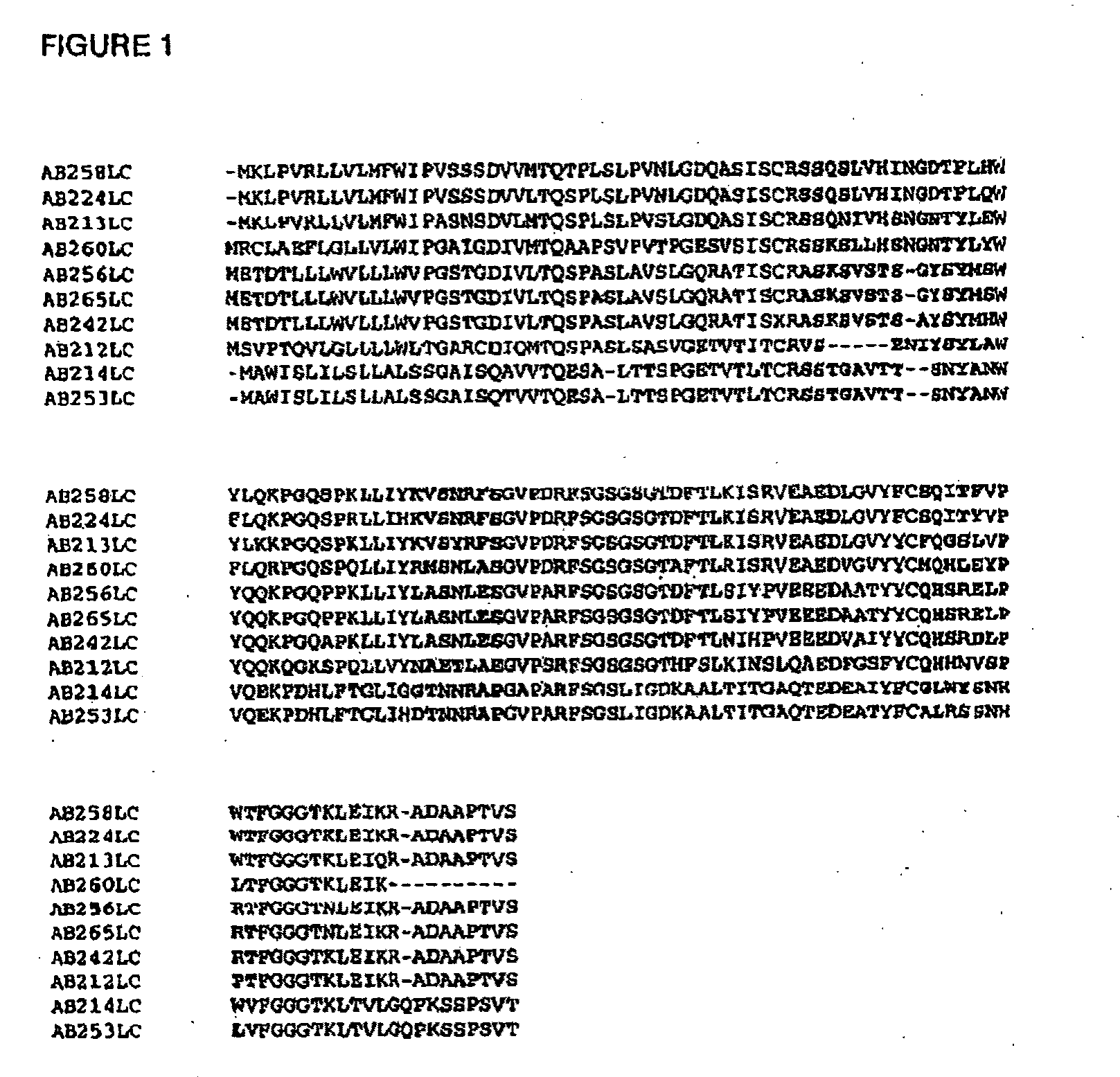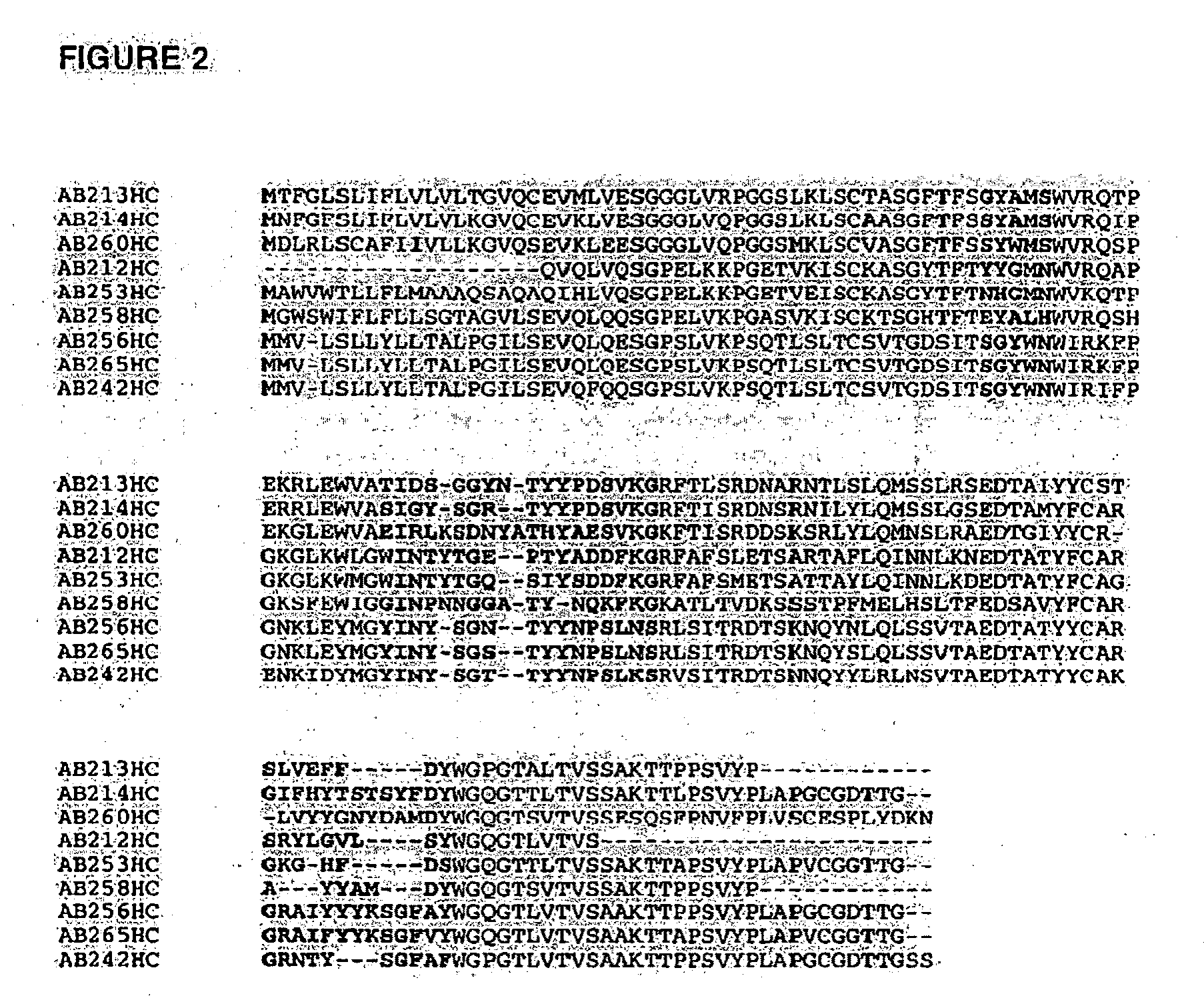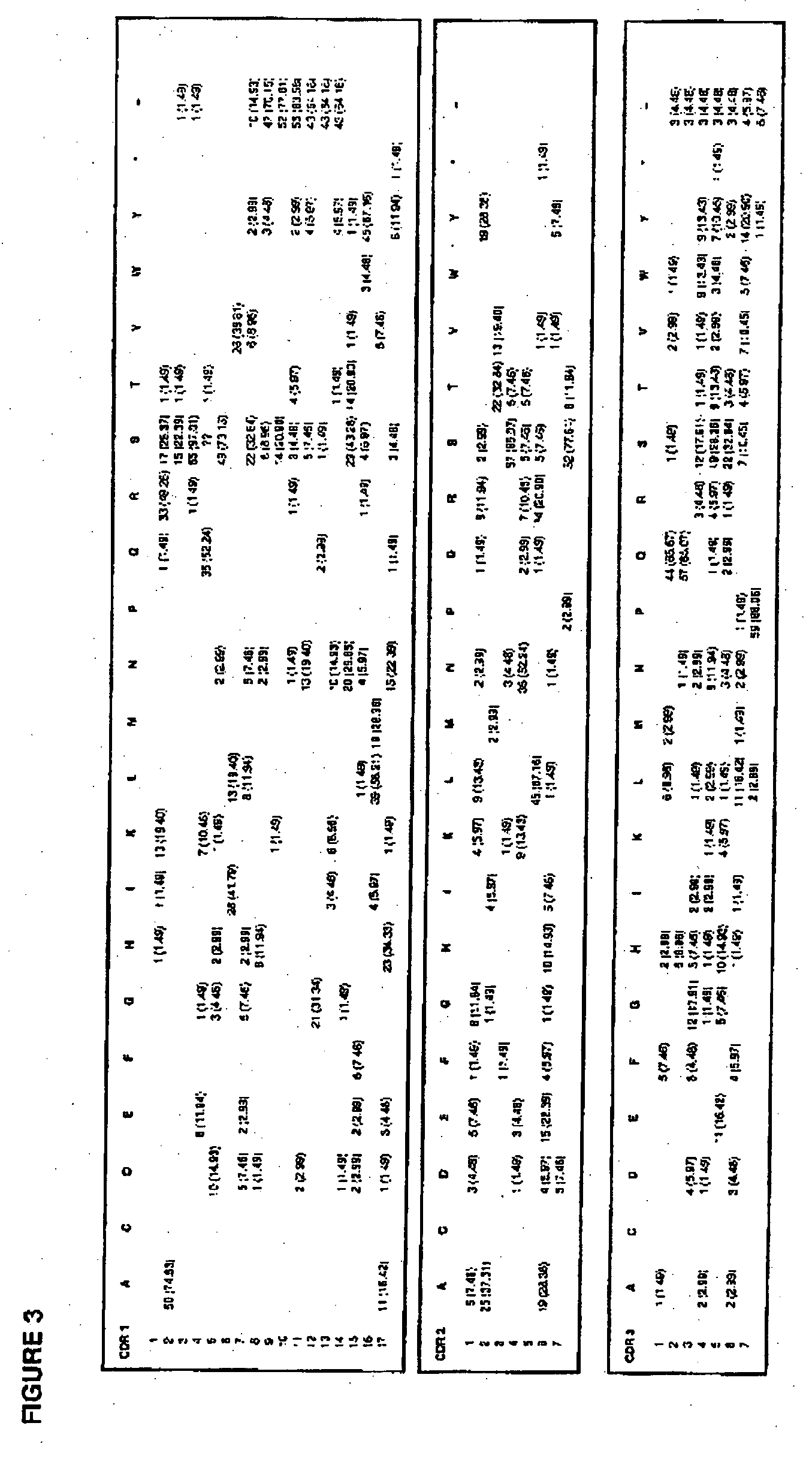Antibodies against non functional p2x7 receptor
a p2x7 receptor, non-functional technology, applied in the direction of immunoglobulins against cell receptors/antigens/surface determinants, immunoglobulins against animals/humans, peptides, etc., can solve the problem of difficult to obtain a hybridoma, and the ability to bind to p2x7 receptors
- Summary
- Abstract
- Description
- Claims
- Application Information
AI Technical Summary
Benefits of technology
Problems solved by technology
Method used
Image
Examples
example 1
[0335]Identification of CDR Sequences from Hybridomas
[0336]The preferred animal system for generating hybridomas is the murine system. Immunization protocols and techniques for isolation of immunized splenocytes for fusion are well known in the art. Fusion cell partners (e.g., murine myeloma cell lines SP2 / 0, NSO, NS1, rat myeloma Y3, rabbit myeloma 240E 1, human K6H6), fusion and screening procedures are also well known in the art.
(i) Hybridoma Generation
[0337]B cell-myeloma cell hybridomas were generated using splenocytes from immunised mice as follows:
[0338]Immunization: BALB / c mice (female, 8-10 weeks of age at first injection, CSIRO animal facility, North Ryde, Australia) were immunized with conjugate comprising human P2X7 200-216 linked to diphtheria toxoid (at a conjugation ratio of approximately 11:1) emulsified in adjuvant. The initial immunization was performed with conjugate in Montanide-QuilA-DEAE dextran, 4×50 μL injections per mouse (2 intramuscularly and 2 subcutaneou...
example 2
Determination of Germline Antibody CDR Sequences
[0351]Murine germline heavy and light chain CDR sequences were obtained from The Antibody Group (http: / / www.ibt.unam.mx / vir / V_mice.html). A total of 177 heavy chain and 67 light chain CDR sequences were mapped by calculating the number and frequency of occurrence of each amino acid at each position. The results are presented in FIG. 3 for the light chain CDR1L, CDR2L and CDR3L germline sequences, and FIG. 4 for the heavy chain CDR1H and CDR2H germline sequences.
[0352]In FIG. 3, the data presented for position 1 of CDR1L shows that histidine occurs only once in the 67 light chain germline sequences analysed, representing a frequency of 1.49% (i.e. 1 (1.49%) in FIG. 3). The other amino acids found at position 1 of the light chain CDR1L germline sequences are isoleucine (1 (1.49%)); lysine (13 (19.40%)), glutamine (1 (1.49%)); arginine (33 (49.25%)), serine (17 (25.37%)); and threonine (I (1.49%)). In FIGS. 3 and 4, the “−” indicates wher...
example 3
Analysis of Germline and Hybridoma CDR Sequences
[0354]Using the information in Table 1, each of the CDR sequences identified in Example 1 was aligned based on similarity of their amino acid side chains. These sequences are represented in FIGS. 5-10 for the light chain CDR1L (FIG. 5), light chain CDR2L (FIG. 6), light chain CDR3L (FIG. 7), and heavy chain CDR1H (FIG. 8), heavy chain CDR2H (FIG. 9) and heavy chain CDR3H (FIG. 10) sequences. Note that each of the CDR sequences have also been assigned a sequence identifier (e.g. the light chain CDR1L sequence derived from antibody 256 has been assigned SEQ ID NO. 1).
[0355]Also presented for FIGS. 5-9 are the values indicating the frequency of occurrence of the identical amino acid at the same position for the germline sequences (i.e. those values calculated according to Example 2; also see FIGS. 3 and 4). For example, referring to FIG. 5, threonine (T) which occurs at position 10 of CDR1L, SEQ ID NO. 1, occurs only 5.97% of the time in ...
PUM
| Property | Measurement | Unit |
|---|---|---|
| affinity | aaaaa | aaaaa |
| binding affinity | aaaaa | aaaaa |
Abstract
Description
Claims
Application Information
 Login to View More
Login to View More - R&D
- Intellectual Property
- Life Sciences
- Materials
- Tech Scout
- Unparalleled Data Quality
- Higher Quality Content
- 60% Fewer Hallucinations
Browse by: Latest US Patents, China's latest patents, Technical Efficacy Thesaurus, Application Domain, Technology Topic, Popular Technical Reports.
© 2025 PatSnap. All rights reserved.Legal|Privacy policy|Modern Slavery Act Transparency Statement|Sitemap|About US| Contact US: help@patsnap.com



